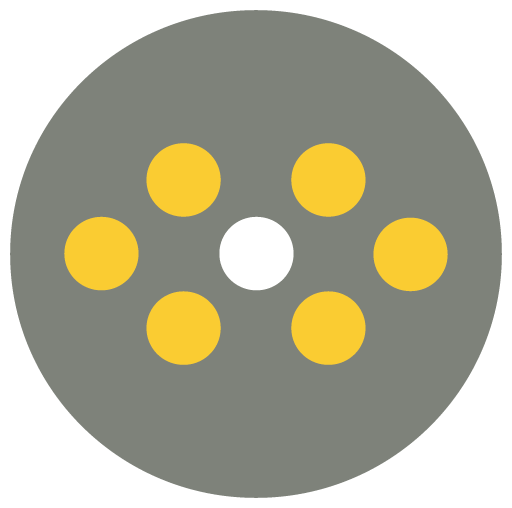
You probably know this by now but if you don't, here goes: your CV is essential for getting the job of your dreams as it is the first point of contact with your potential employers. By definition, the CV or curriculum vitae will allow you to outline your skills and experiences in one quick glance. So it's extremely important that your CV is well-written and well-designed!
It should not only contain all the critical information about your suitability for the role but, it should also be easily understood to increase your chances of landing the job that you're applying for. A badly laid out or poorly written CV could be costing you opportunities without you realising.
And even if you have been in your current job for a considerable amount of time, it is always good practice to keep your CV up to date periodically. The layout of your CV should be designed in such a way that it will effectively showcase your qualifications, skills and experiences to align your suitability for the role on offer.
Here’s what you need to know:
1. Have a plan
Before you start writing, take a minute and have a think about the most important information about yourself. Take extra care to consider your work experience and the skills that you have developed so far. Ideally, you should be tailoring your CV to each role that you’re applying for. And as always, consider the keywords that are listed in the job description and try to work them into the body of your CV as seamlessly as possible.
Quick reminder: contact information such as your phone number and email address should be at the top of your CV for better ease and convenience.
2. Consider the length
Most hiring managers are pressed for time as they typically have a large number of CVs to review for any given role. And this means that the time or attention that the hiring manager actually has to review your CV is fairly limited. With this in mind, our advice to you is to keep your CV length to a maximum of two pages. Unless of course, you have decades of experience and career history to go through!
3. Layout of the text
Given the two previous points made, you can maximise the readability of your CV by writing in short paragraphs or short statements and presenting them in bullet point format. Try to use headers whenever possible for each section of your CV as they will allow the readers (potential employers, hiring managers, recruiters and even Applicant Tracking Systems or ATS) to quickly locate relevant information for the role. Titles such as work history, qualifications, interests and skills are a few examples that should be consistently formatted as headers.
For more layout and design advice to use in your CV, read the 8 Most Common Design Mistakes and how to perfect it.
4. The writing style
When it comes to the language in your CV, our advice is to write in first person view using terms such as me and I throughout the body of your content. The reason why is fairly simple; first-person view will allow you to sound direct and personal which means that you will be relaying your information as effectively as possible.
Another point to consider here is the written tense of your texts in certain parts of the CV. When writing your personal statement and covering letter, the best approach is to write in the simple present tense. As an example, the sentence “I am an ambitious and hardworking individual” is more persuasive than if it was written in other tenses. Equally, content concerning your work history should be written in the past tense to convey actions done and results achieved.
5. The contents of your CV from top to bottom
After detailing your key contact information, you should consider writing a short personal statement that quickly summarises your personality and experience. This should be one or two paragraphs long and must be tailored to the job role that you are applying for.
Our tip here is to review the keywords used within the job description of the role that you are applying for and include them into your personal statement – this is your chance to show the recruiter or hiring manager that you are the right person for the job! And in line with tip number four: don’t forget to write this in the first-person view!
The next section that follows after your personal statement should be your work history. This section should be presented in reverse chronological order, starting with the most recent job role to your very first entry-level job. And within each role you’ve previously held, make sure to include essential details like the company name, the dates when you were there, what position you filled as well as descriptions of the role responsibilities and tasks you worked on.
Always double check the dates and account for any gaps in your employment history as this will most likely be brought up by the hiring manager or recruiter! Remember, not having the work experience isn’t an issue but leaving a gap without any explanation or details is.
After your work history, the next section of your CV should be your qualifications and training details. Now, we’re not saying you need to include everything but make sure to tailor this section according to the role that you are applying for. All the elements presented here must be relevant, factual and must be ones that accurately match you with the job.
The last section to include at the bottom of your CV is a section on your interests. While some may argue that this is unimportant or irrelevant to a job, we’d say that it’s most definitely the opposite. Why? Because this section can tell the hiring manager or recruiters what they need to know and gauge if you will be a good fit for the culture of the organisation. For most companies and businesses, finding an employee that works well with the team is equally as important as finding someone who will be good at the job.
6. The format
Given that most hiring managers and recruiters use some form of Application Tracking Systems or ATS in their hiring process, you should make sure that the CV you submit is saved as a Word or PDF document. In doing so, you will ensure that your CV is readable to both the human and the computer’s eyes.
And of course, don’t forget to get your CV checked for typos and spelling mistakes! Don’t ruin your hard work by making any of these 23 CV Mistakes as they will most likely ruin your chance of getting that dream job!





